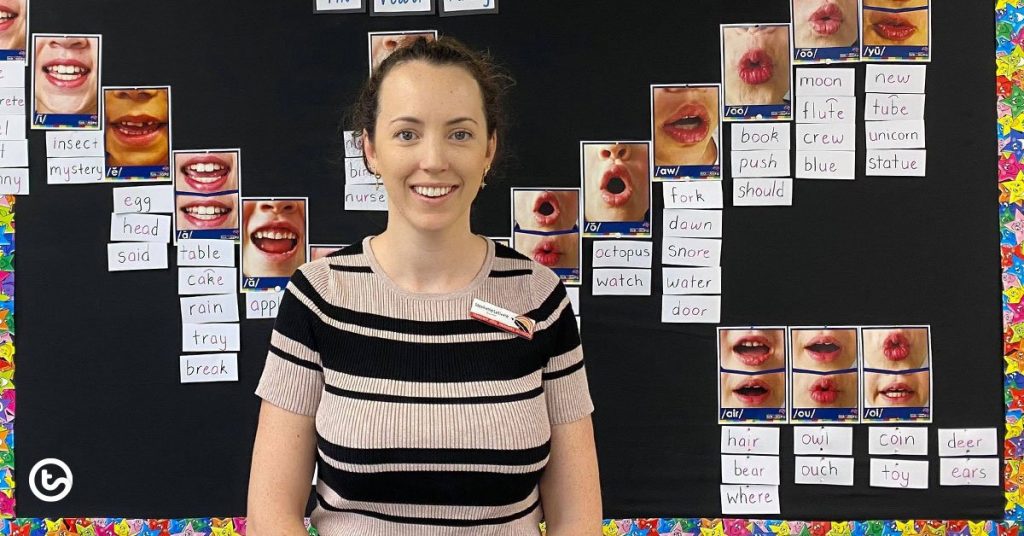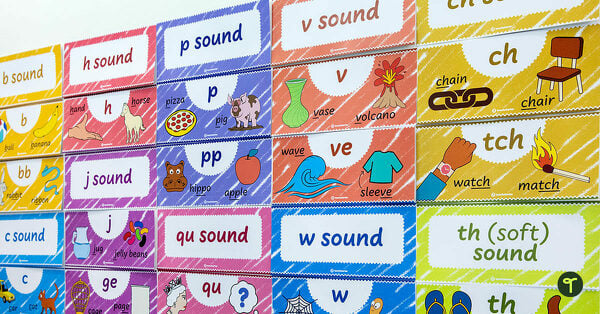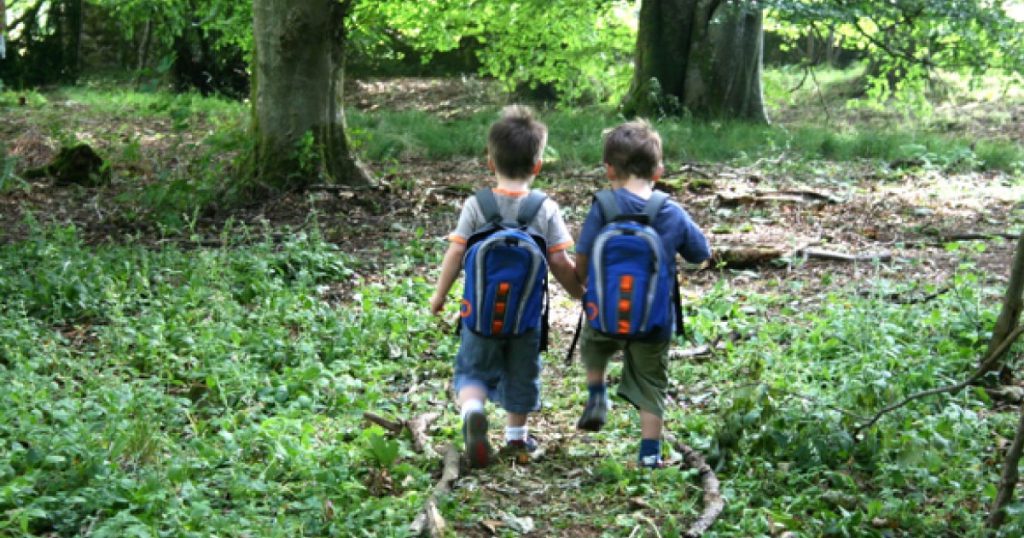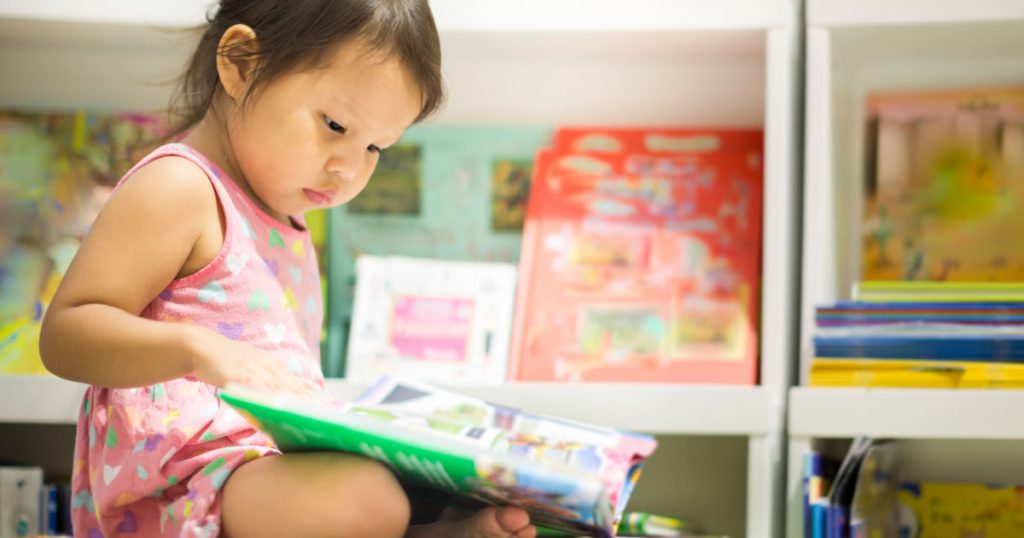Teachers have a plethora of sources to help guide research-based best practices in teaching, such as journals, professional development, educational magazines, and podcasts… just to name a few. But, the most powerful learnings occur in the staffroom with your teaching buddies! These professional discussions cover the impact of educational research on classroom practices and allow teachers to narrow the gap between research and reality. This gap often makes it difficult for a teacher to really implement newer research-based practices into their classrooms.
Join this staffroom discussion around the topic of the real effectiveness of word walls in the classroom and information surrounding why some teachers are adopting sound walls over word walls.
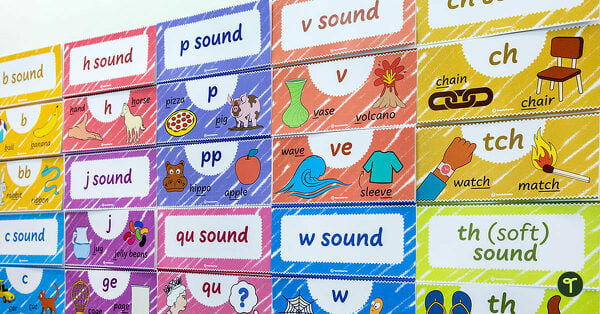
Shutterstock.com / Krakenimages.com
What is a Sound Wall?
A sound wall is a classroom display that is based on the phonology of our language. In other words, the different speech sounds, or phonemes, are displayed rather than just the 26 letters of the alphabet like a word wall. A sound wall is typically set up in two sections, vowels and consonants. Each phoneme represented includes an articulatory photo as well as a list of words that clearly displays the different graphemes for each phoneme.
By using articulatory photos, children are encouraged to think about the place of articulation – in other words, what’s happening with their teeth, lips, and tongue when they are making a sound.
“I was a speech pathologist before I became a teacher, so I’m very aware of the link between speech, language, and literacy.” – Stephanie Le Lievre from Reading Science in Schools Facebook Group
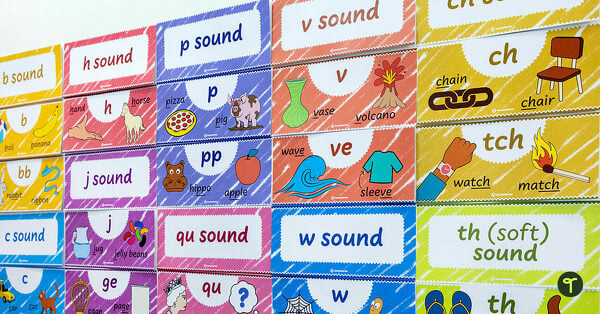
Example of a Sound Wall set up in Stephanie’s classroom. She is using articulation visual cue cards.
Teacher idea: When introducing a sound, why not take a photo of one of your students’ lips and use that for your display.
Word Walls vs Sound Walls
Of course, bringing up the topic of using sound walls has many teachers asking… but what about word walls? Are they not useful anymore? Here are some interesting points that may help you understand this a little better.
The word wall was always my first staple display for my classroom. Students would often refer to it during independent writing, and I would always have the words in alphabetical order. However, this concept of sorting high-frequency words in alphabetical order presents some confusion for our little learners. For example, the word ‘the’ on a typical word wall would be placed under the letter ‘t’. However, ‘the’ does not begin with the phoneme of /t/ rather /th/ unvoiced. Similarly, the word ‘she’ does not begin with the phoneme /s/ rather /sh/. This lack of scope makes it confusing for our learners when we are trying to teach them to decode words based on phonemes.
“The idea is that by highlighting how each sound is produced (manner and place of articulation) and then linking the sound to its graphemes, this strengthens the phoneme-grapheme representations in our students.” – Stephanie Le Lievre
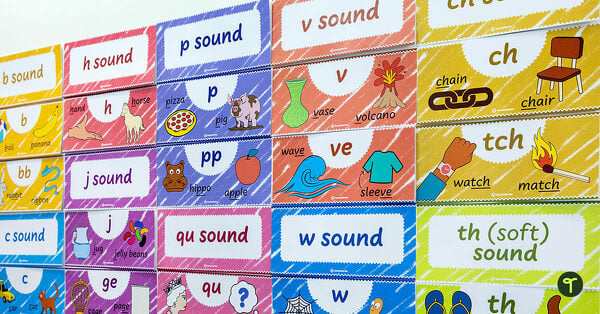
Shutterstock.com / Julija Sulkovska
This shift in using sound walls has come about from the Science of Reading research. If you’re interested in reading more about this research, head on over to our blog – What Teachers Should Know About the Science of Reading Research.
Don’t Panic! Word Walls Still Have a Place!
While all of this information certainly provides a good argument for the use of sound walls, there is still a place for word walls in the classroom. It’s just the use of them that may look slightly different. For example, rather than using them for spelling purposes for your students, a better focus is on building new vocabulary. You may be wondering what that would look like. One great example would be incorporating a ‘word of the week‘ routine and creating a word wall for the new words your students are learning.
Or, perhaps you are introducing new vocabulary as part of a Science or Social Studies unit. This is where a word wall is still helpful in the classroom environment.
How to Use a Sound Wall in the Classroom
If you’ve decided that a sound wall is something that you feel would support your students in becoming phonologically aware, it’s important to understand the best way to create and use the sound wall in your classroom. You should not put the entire sound wall up at the beginning of the year; you don’t want to overwhelm your students, and it’s much more beneficial if you create it with your students.
Here are some suggested steps for how to introduce each of the phonemes on your sound wall.
- Explicitly introduce each of the sounds as you usually would in your classroom.
- Model the way you make the sound with your mouth.
- Have each student use a mini mirror to see what their lips, teeth, and tongue are doing when they make the sound.
- Discuss as a class what they notice when they are making that particular sound.
- Display a word for each spelling pattern seen for this specific sound (if students are ready for this).
“As I target a particular sound/s I ensure I model how it’s produced and show the photo. Students practice making the sound, and then they learn the spelling/s that represent the phoneme – and apply it in decoding and encoding tasks.” – Stephanie Le Lievre
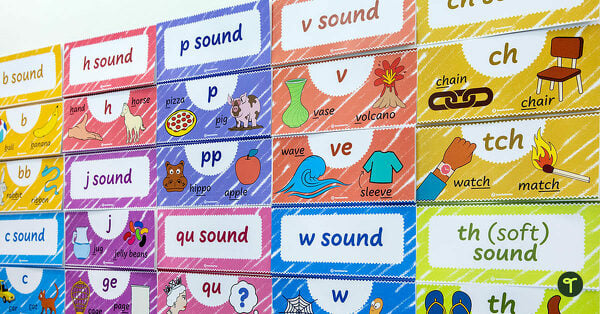
Stephanie’s Vowel Valley display from her classroom.
Teacher Tips
When Stephanie created her sound walls, she just used handwritten words, ensuring the letter combination that makes each phoneme is in a visibly different color.
If you use a particular phonics program in your school, you can create a sound wall in conjunction with the order in which the phonics program gets you to expose your students to different phonemes.
“I would gradually introduce the photos of the articulatory gestures as you introduce the phonemes as part of your phonics program. As we learn more spellings for a sound (e.g. /ay/ sound) we add these –
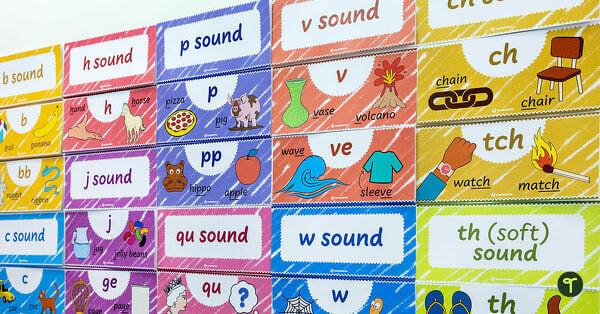
Stephanie’s Consonant Chart example from her classroom.
You will want to review the sound wall daily with your students. It may be all the students standing around and practicing each of the sounds with their mini mirrors. Or perhaps it’s using the word of the week and decoding the sounds in the word using the sound wall. Encouraging your students to use the sound wall to decode and spell words is just as important as building the sound wall.
We’d love to hear your thoughts! Are you considering a sound wall in your classroom?
The post Why Teachers Are Adopting Sound Walls Over Word Walls appeared first on Teach Starter.
